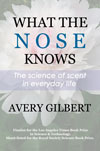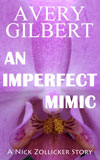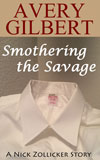In a series of pre-Halloween posts a decade ago, I examined ghostly smell stories and poems including examples from the Victorian English novelist Wilkie Collins, the 19th century American writer Bret Harte, the Irish poet W.B. Yeats, and an English novel (“The Uninvited”) that was made into a movie starring Ray Milland.
I was reminded of them this week when I came across a new study: “Perceptual phenomena associated with spontaneous experiences of after-death communication: Analysis of visual, tactile, auditory and olfactory sensations.”
Have I started dabbling in occultism? Not exactly. The paper appears in Explore: The Journal of Science & Healing, published by Elsevier, which claims to address “the scientific principles behind, and applications of, evidence-based healing practices from a wide variety of sources, including conventional, alternative, and cross-cultural medicine.” Further, “It is an interdisciplinary journal that explores the healing arts, consciousness, spirituality, eco-environmental issues, and basic science as all these fields relate to health.”
OK, then!
So who conducted the study? Here’s the batting order:
Marjorie Woollacott, an emeritus professor of physiology whose focus is motor control.
Chris A. Roe, a professor of psychology at the University of Northampton in the UK who is President of the Society for Psychical Research and whose most recent publication is a chapter titled “Clinical parapsychology: The interface between anomalous experiences and psychological wellbeing.”
Callum E. Cooper, a senior lecturer in psychology at Northampton, who holds two doctorates and whose most recent publication is the entry on “Anal Intercourse” for the Encyclopedia of Sex and Sexuality.
David Lorimer, Programme Director of something called the Scientific and Medical Network, and an editor and author of many books including Survival? Death as a Transition; he is interviewed in a recent youtube video.
Evelyn Elsaesser, an independent researcher in Switzerland and author of, among other books, On the other side of life: Exploring the phenomenon of the near-death experience.
So what have they delivered?
The study itself consists of a lengthy 194-item online questionnaire that was filled out by 991 people, mostly women (85%) with a median age of 51 years. The olfactory data appear in Table 6. In response to the question “Did you smell a fragrance characteristic of the deceased which made you think he/she was present?” 28% of respondents said yes. Of these, 60% also said yes to the next question: “Did you feel that the deceased was conveying a message to you by way of this fragrance?”
The authors give us an idea of what smells were reported:
“The fragrances typically included aftershave lotion, a typical body scent, perfume or soap, but many odors were noted in the descriptions, including tobacco, food and flowers.”
Smells were the least common sensory impression (28%) reported by
people who experienced ADC. The most frequent were tactile (48%), visual (46%),
and auditory (44%). While noting that there is considerable variability in the
representation of the individual senses in previous studies of ADC, the authors
don’t have much to say about the proportions they found.
For what it’s worth, I would point out that the substantially lower incidence of smells compared to sights and sounds is consistent with what’s been reported for sensory impressions in dreams and hallucinations.
The paper is mildly interesting for the cross-sensory tabulations insofar as they relate to smells in phantosmia, dreams, and hallucinations. Whether there is anything else worth pursuing on the topic of after-death communication is, in my opinion, dubious. Interestingly, the funders of the study are publicity-shy:
Funding: This work was supported by a foundation that wishes to remain anonymous. The funding organization had no influence on the final research design, data collection, analysis, interpretation of data, the writing of the report or the decision to submit the article for publication.
UPDATE May 7, 2021
And right on cue—spooky new Netflix movie Things Heard & Seen features among other things a smelly ghost.
The study discussed here is “Perceptual phenomena associatedwith spontaneous experiences of after-death communication: Analysis of visual,tactile, auditory and olfactory sensations,” by Marjorie Woollacott, Chris A. Roe, Callum E. Cooper, David Lorimer, and Evelyn Elsaesser, published online in EXPLORE, February 23, 2021.






